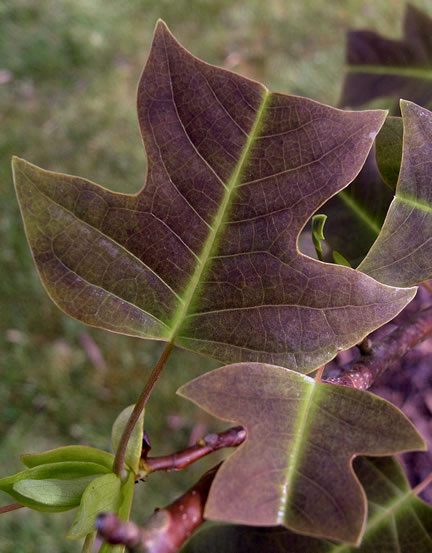
Woody > Liriodendron > Liriodendron chinense > Liriodendron chinense
Liriodendron chinense
Chinese Tulip Tree
Origin: Central China and Vietnam. Liriodendron comes from the Greek word 'leirion', which means lily and 'dendron', meaning tree.
| Family |
| Magnoliaceae |
| Genus |
| Liriodendron |
| Species |
| chinense |
| Category |
| Woody |
| Type |
| Tree (deciduous) |
| Pronunciation |
| USDA Hardiness Zone |
| 6b - 7a |
| Canadian Hardiness Zone |
| 6 |
| RHS Hardiness Zone |
| H6 |
| Temperature (°C) |
| (-21) - (-15) |
| Temperature (°F) |
| (-5) - 5 |
| Height |
| 15 - 21 m |
| Spread |
| 9 - 12 m |
Photographs
Description and Growing Information
Flowering Period
| General Description |
| Liriodendron chinense has large, deeply lobed leaves and olive green flowers borne on mature trees. This species has been placed on the IUCN Red List as globally threatened. |
| Cultivation |
| Grow in full sun, in moist, well-drained, acidic to neutral, humusy soil. Tolerant of some shade. |
| Shape |
| Columnar. |
| Growth |
| Fast |
| ID Characteristic |
| Large, deeply-lobed leaves. Flowers have short inner petals. |
| Pests |
| No serious pests or diseases of note. Occasional problems include: mealy bugs, leaf miners, borers, aphids, scale, powdery mildew, verticillium wilt, and canker. Aphids will secrete honeydew on the leaves, leaving them susceptible to sooty mold. |
| Habitat |
| Evergreen forests in the Yangtze River valley and further south to Vietnam. |
| Bark/Stem Description |
| Grey to greyish brown twigs. |
| Leaf Description |
| Deeply tri-lobed with terminal lobe truncated, bright green turning golden yellow in autumn, 4-12 x 3-9.5 cm. |
| Flower Description |
| Showy, cup-shaped, tulip-like, olive green with yellow at the base, up to 4 cm long. Appear on mature trees after leaves have developed therefore often go unnoticed. |
| Fruit Description |
| Oblong, dry, scaly, cone-shaped, brown, containing many winged seeds. In clusters that disintegrate when ripe. |

.jpg)
